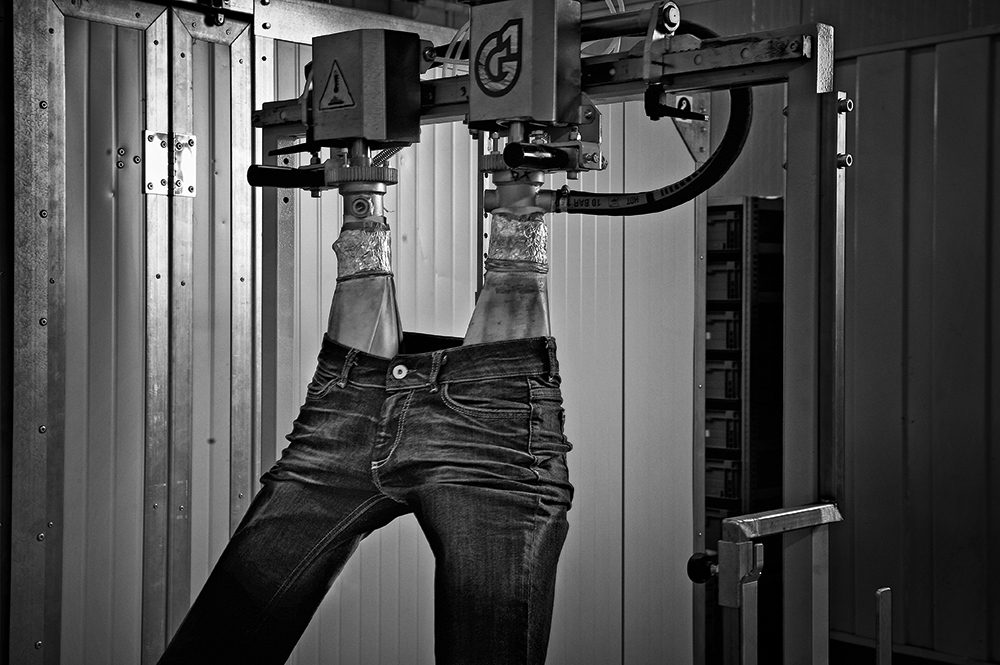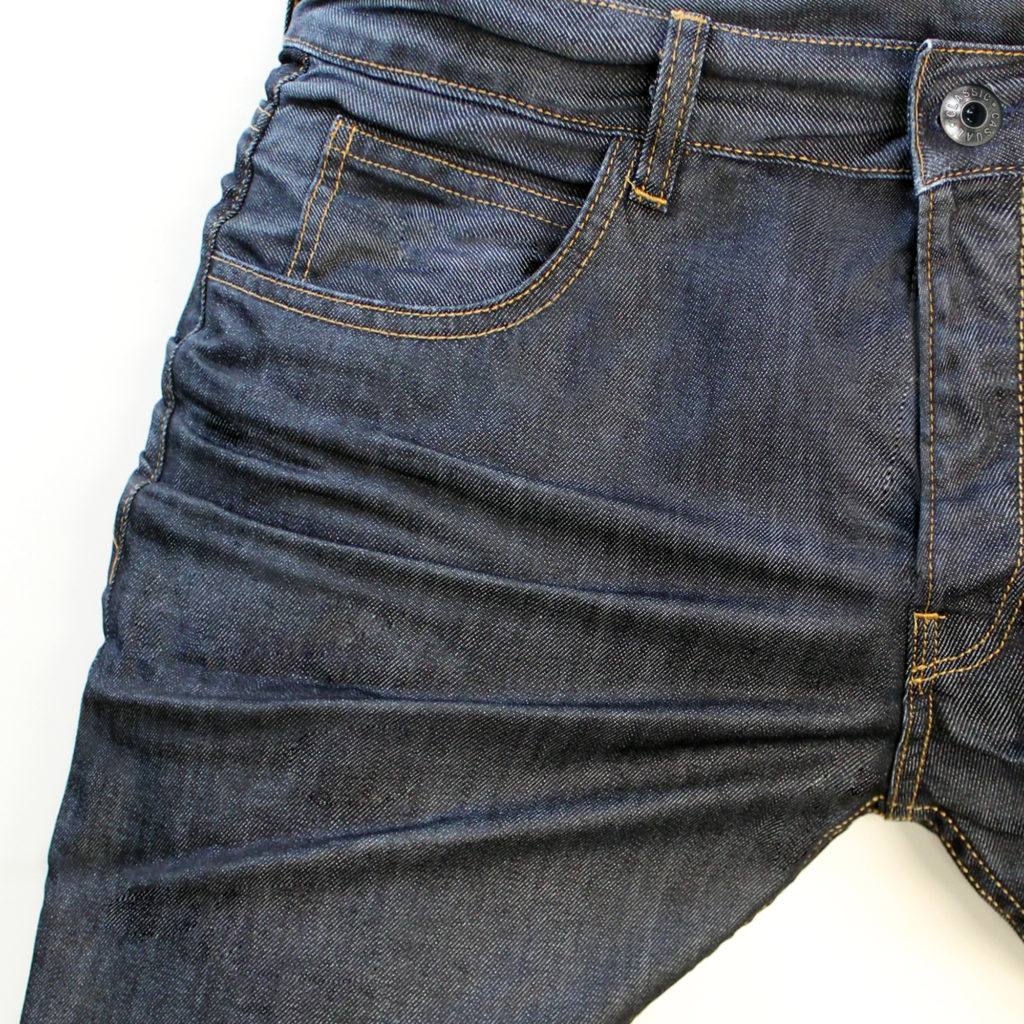This Encyclopedia entry is a must-know term. Learn more in our Denim vocabulary.
Pre-washing is a term for the industrial processes where water, chemicals and abrasive techniques are used to imitate or exaggerate the natural fading of denim that happens as you wear and wash raw denim.
Pre-washing is also called ‘pre-distressing,’ while the technically correct term for the processes is garment finishing.
The aim of pre-washing is usually to replicate the look that raw denim jeans get with everyday wear and wash. Jeans are also pre-washed to simply make the colour brighter, make the denim softer, or to reduce issues with ‘crocking,’ where the colour rubs off the fabric.
A benefit of pre-washing is that the wearer gets jeans that look and feel lived-in, right of the store shelf. The reasons to choose pre-washed jeans are usually that they’re softer and thus more comfortable, but often it’s also a matter of personal preference and what’s in fashion.
A disadvantage of pre-washed jeans is that they sometimes don’t last as long as unwashed jeans. Even with non-abrasive pre-distressing, you’re effectively shaving off wear time.

Common pre-washing processes
Below, some of the most commonly used pre-washing processes are explained.
Rinsing
A rinse is the simplest denim laundry process; the jeans are washed in water. The purpose is to soften the denim and give it that one-wash look.
Many Japanese brands sell their jeans rinsed, or one-washed, especially when they’re made from unsanforized denim, in which case the rinse shrinks down the jeans.
Stonewashing
Stonewashing is a pre-washing process where the jeans are washed with pumice stones. The stones are added to the laundry machine, and the rough surface of the stones abrades the fabric and wears off the indigo dye. The result is a softer touch and washed-down look.
Hand scraping
Hand scraping is a manual process that is used to recreate whiskers and honeycombs, as well as general fading on the thighs and the seat area, which you normally get with natural wear and tear.
As the name suggests, the scraping is done by hand. And it’s labour-intensive. Trained craftsmen use sandpaper, sanding blocks and other sanding tools to abrade the denim and remove the colour.
Sometimes, a mould with all the creases is used. This makes the process quicker, but more expensive as new moulds need to be created for every wash. Craftsmen may also use drills to distress the hems and pocket edges or to create nicks and cuts.
While it may look relatively easy, if you’ve ever tried hand scraping yourself, you know it’s not! What the jeans end up looking like in the end greatly depends on the skills and attention to detail of the craftsman. Hand scraping is also the finishing process that’s often used to create breaks and rips.

3D shaping
This manual process replicates the look denim gets when it’s moulded to your body. It’s used both before and after the local fading is done. And you can have both permanent and temporary 3D shaping.
The jeans are usually dipped in or sprayed with starch that makes the denim stiff. Then they’re fitted on a rubber dummy, and the legs are bent like if a person was squatting a little. Workers then manually crinkle the jeans in the places where whiskers and honeycombs would naturally appear. To set the crease in place, the jeans are then baked in a massive industrial oven.
PP spray
A common ‘dry process’ garment finishing method is spraying potassium permanganate (often abbreviated ‘PP spray’) onto the jeans. This oxidising agent is used to create local abrasions.
PP spray is usually hand-sprayed onto certain areas of the garment, which is mounted on rubber dummies. It can also be applied by hand with a special glove or a paintbrush, or even without any manual work using robots.
Ozone washing
Ozone washing is a laundry technology that is used to ‘rinse’ and fade jeans. Natural ozone gas is created by miniature thunderstorms in a closed-circuit environment and then injected into the laundry machine.
When injected into the laundry machine, the ozone gas has the same effect on denim as stonewashing, only it’s more environmentally sustainable. The main advantage of ozone is that process consumes much less water and has virtually no waste, compared to stonewashing.
Enzyme washing
The enzyme washing technology gives jeans a washed-down and aged look as well as a soft touch. Using natural enzymes to brighten the jeans, the method is an eco-friendly alternative to stonewashing.

Laser
A laser beam is used to create virtually any wash pattern in a matter of seconds. No water or chemicals are used in the process, and it also drastically reduces the amount of manual labour that is needed compared to hand scraping.
Compared to PP spray, laser gives better and more consistent results from an aesthetic standpoint.
